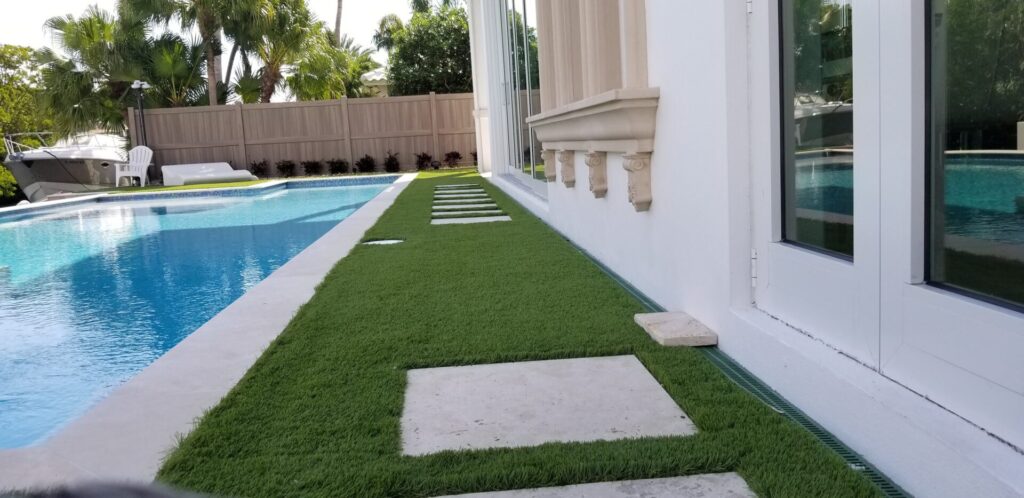While synthetic turf offers numerous benefits, such as low maintenance and water conservation, it’s important to consider potential hazards and challenges associated with its installation and use. Here are some of the key hazards to be aware of when opting for synthetic turf:
1. Heat Retention
Artificial turf can absorb and retain heat, especially in hot climates, making the surface uncomfortable to walk on barefoot or for pets. The high temperatures can also pose a risk of burns. Choosing turf with cooling technology or using shade structures can mitigate this issue.
2. Environmental Concerns
While artificial grass reduces water usage and eliminates the need for chemical fertilizers and pesticides, its production and disposal have environmental impacts. The manufacturing process can contribute to pollution, and disposing of old turf can be challenging due to its composition of non-biodegradable materials.
3. Drainage Issues
Proper installation is crucial for effective drainage. Poorly installed synthetic turf can lead to water pooling on the surface or inadequate drainage, which can cause mold, mildew, and odors. Ensuring that the turf is installed with a proper drainage system is essential.
4. Injury Risks
Although synthetic turf provides a consistent playing surface, it may not offer the same level of cushioning as natural grass. This can increase the risk of injuries, particularly in high-impact sports. Choosing a turf system with adequate padding and infill can help reduce this risk.
5. Toxic Runoff and Materials
Some synthetic turf products may contain potentially harmful chemicals, such as heavy metals and volatile organic compounds (VOCs), which can leach into the environment. Opting for high-quality, eco-friendly turf products can help minimize this risk.
6. Static Electricity
Synthetic turf can generate static electricity, particularly in dry conditions. This can be an annoyance for people and pets and might also pose a risk to electronic devices. Using anti-static infill or treatments can help reduce static build-up.
7. Cost of Installation and Replacement
While synthetic turf can save money on maintenance over time, the initial installation cost can be high. Additionally, synthetic turf has a finite lifespan (typically 10-15 years) and will need to be replaced eventually, which can be a significant expense.
8. Loss of Natural Benefits
Natural grass offers several environmental benefits, including carbon dioxide absorption, natural cooling, and habitat for insects and small animals. Replacing grass with synthetic turf can lead to a loss of these benefits, potentially impacting local ecosystems.
9. Potential for Algae and Mold Growth
If synthetic turf does not dry properly or is installed in a damp area, there is a risk of algae and mold growth. This can lead to unpleasant odors and slippery surfaces. Proper installation and regular maintenance can help prevent these issues.
By being aware of these potential hazards, you can take the necessary steps to mitigate risks and make an informed decision about installing synthetic turf.
